How to see your art objectively
Be honest:
How often have you been told a piece of art you have created is great, only for you to respond by pointing out its faults?
Most of us have done this A LOT.
But why is it that us artists place more emphasis on the weakest parts of our work than on the strongest? Why do we want to draw other peoples’ eye to the parts we like least?
What does it matter that the rest of the painting is vividly realistic and visually exciting when you know you got that leaf in the bottom corner wrong?
Is it the case that the peeps offering praise just don’t know a bad leaf when they see one, or is the problem really with you?
Well, there’s good news and bad news.
The bad news is that the problem here is likely always you (at least partly). The good news is that it’s not your fault. In fact, the issue is with your brain’s hard wiring. You’re experiencing the effects of something we all have, known as the Negativity Bias.
So what is Negativity Bias?
Well, it is best explained as the tendency to place more weight on the negative than on the positive. Neuroscientist Dr. Rick Hanson describes that
“in effect, the brain is like Velcro for negative experiences, but Teflon for positive ones.”
We see many examples of this in life, for instance if a work appraisal or school report contained 95% positive comments but one negative comment, we may consider this to be overall negative.
Negativity bias is common among perfectionists
As someone with perfectionist tendencies, I’m all too familiar with this. Phil used to laugh at me (nicely) when I would teach workshops which provided anonymous feedback forms. I’d usually have 14 out of 15 giving me 10/10. Then there’d be one, usually for whom the painting style was not a fit, who’d give me 7/10 or something, and I’d fixate on that one form, trying to think who it was from and how I could have taught them better!
We also see this bias in artistic practice. Almost every aspect of a piece of our art may be spot-on, but if just one thing is not right, we deem the painting unsuccessful.
We have our ancestors to thank for kindly passing this bias down to us. But we shouldn’t be too ungrateful. After all, this mindset meant that they remembered danger and survived the threats which intrigued their less cautious comrades who didn’t live to tell the tale. The Negativity Bias is valuable for staying alive, but not ideal when it comes to appraising our own art. Or is it?
There are reasons why Negativity Bias is good.
There are times when a critical eye is needed, and that’s when Negativity Bias can be our best friend. Spotting the weaknesses in our work helps us to find and fix mistakes, stretch ourselves, learn and improve.
But if we’re not conscious of it, this bias can hinder our ability to see our art objectively and appreciate our accomplishments. Worse than this, forever seeing our work through negative-tinted glasses can become seriously demotivating.
According to Dr. Hanson, it IS possible for us to overcome negativity bias by interrupting it in its tracks.
But what if my problem’s not Negativity Bias? What if my art is just bad?
Let’s be clear here. Just because your work isn’t yet coming out the way you would like it to, this does NOT mean that it’s bad! You are learning. Be gentle with yourself.
Sometimes our work will fall short of our expectations and this is an important part of the learning process. It’s what happens when we challenge and stretch ourselves to learn new techniques. It’s possible that your technical skills are just taking time to catch up with your creative vision. Check out this post for advice on working through this issue.
Even if your technical skills need more practice, it’s still likely that Negativity Bias is also playing a role in the way you view your art. The ability to see your art objectively is another skill that you can learn in time.
Here are my top tips for overcoming Negativity Bias so that you can see your art objectively:
1. Controlled, conscious critiques
First of all, don’t critique your work before you have finished it – all paintings go through the ugly duckling stage. You are doing yourself a disservice if you continuously critique your overall piece of work before it’s ready.
When your work is at a stage where you feel it is ready for a critique, consciously put your mind into “critique mode”. You might do this by moving the painting to a different place to look at it objectively, away from your workspace. And, especially crucial for detailed work you’ve been closely looking at, make sure you step a few paces back from your work to gain a different perspective. When you are consciously critiquing your work, you can be mindful to ensure that Negativity Bias is not invited.
Are you able to make objective observations about the work without your inner critic casting judgment? If you are noticing any negative judgments in your mind, try leaving your painting for a day or two. Come back to it with fresh eyes and a new perspective.
Once you have finished critiquing your work, consciously tell yourself that you are exiting “critique mode”. Deliberately entering and exiting “critique mode” will help you to resist critiquing your work outside of those times. After a while, this discipline should become a habit. You will not see your work through critical eyes every time you look at it, and Negativity Bias will have no opportunity to interfere.
2. Find the positives
So, the piece you have been working on hasn’t become the success you had hoped that it would. Is it time to eBay all your art equipment? Of course not. Was it a waste of time, paper and paint? Absolutely not.
Why? Because there will always be elements of your work that were a success. Sometimes it is the successful elements of our work that make us feel most disappointed if other things in the painting go wrong.
You may not be able to stop yourself from dwelling on the part that didn’t go right, but you can at least identify the things that did.
Anytime you are not feeling sure about a painting, start by identifying 3 things you have done well with the work. In fact, this is a healthy way to start a critique of any piece of work.
3. Call in the reinforcements
If the relationship between you and your painting has become so strained that you struggle to find three positives, it’s time to call in some back-up. Share your painting with a supportive friend who is also learning (the community in my online School is perfect for this). Ask them to find the good points – they will be able to! Not because they are being kind, but because they will have the distance and perspective to see your art objectively, even if you can’t just yet.
As scary as that thought may seem, sharing your paintings with the right people works wonders for your creative development and can lead to real breakthroughs.
How about you?
Are you able to see your art objectively? Does Negativity Bias affect the way you view your work? Do you have any tips on how you counter negative thoughts about your work? I’d love to hear them, so please do share in the comments below.

Share this post!
Browse more blog posts
56 Comments
Leave a Comment
Share this post!
Subscribe to blog updates
Blog Updates
The information you provide here will be used only to deliver the email course, along with other relevant updates from me. You can unsubscribe anytime. Click here for our privacy policy.

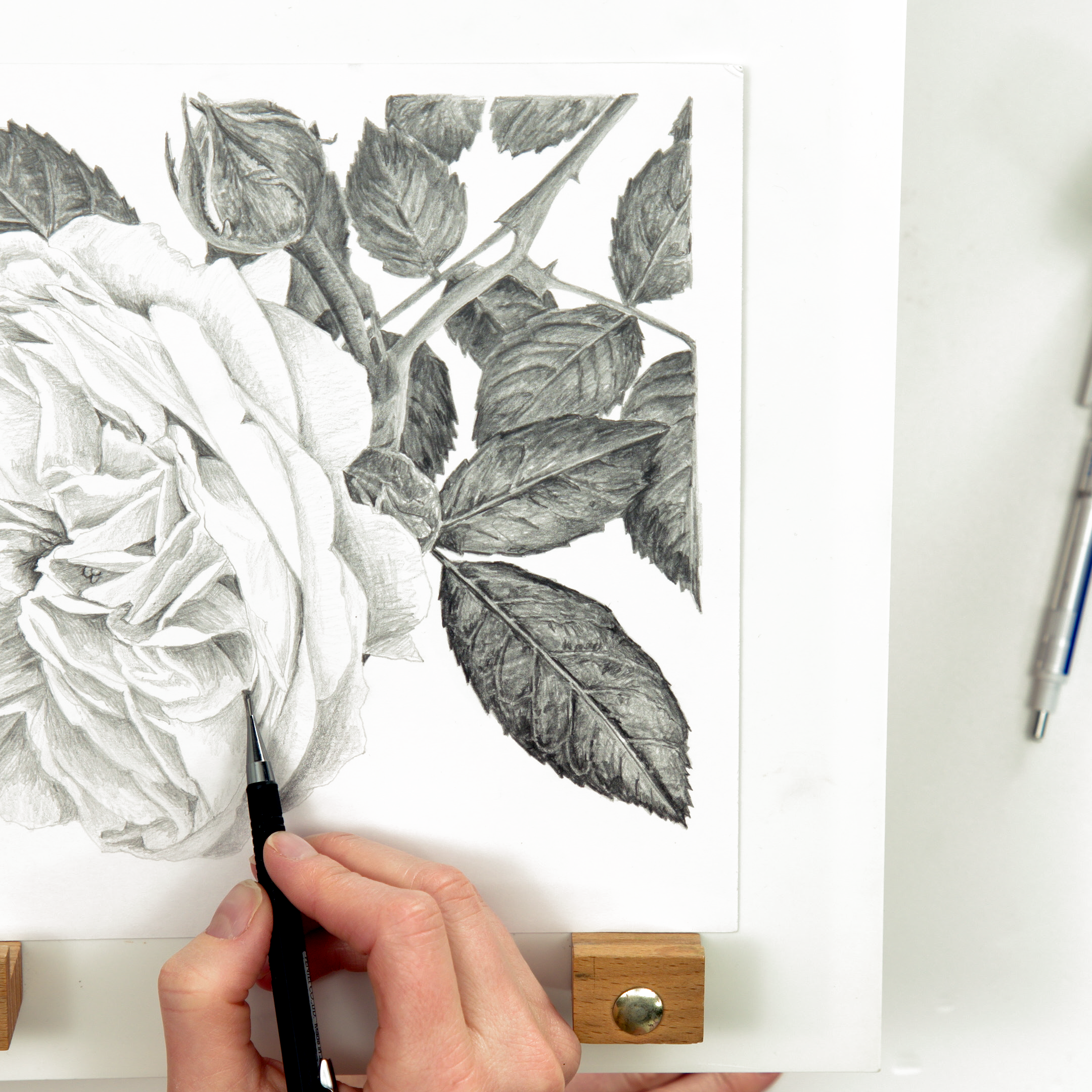
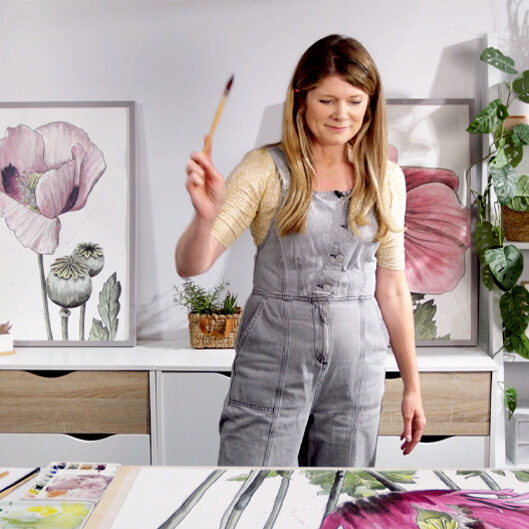
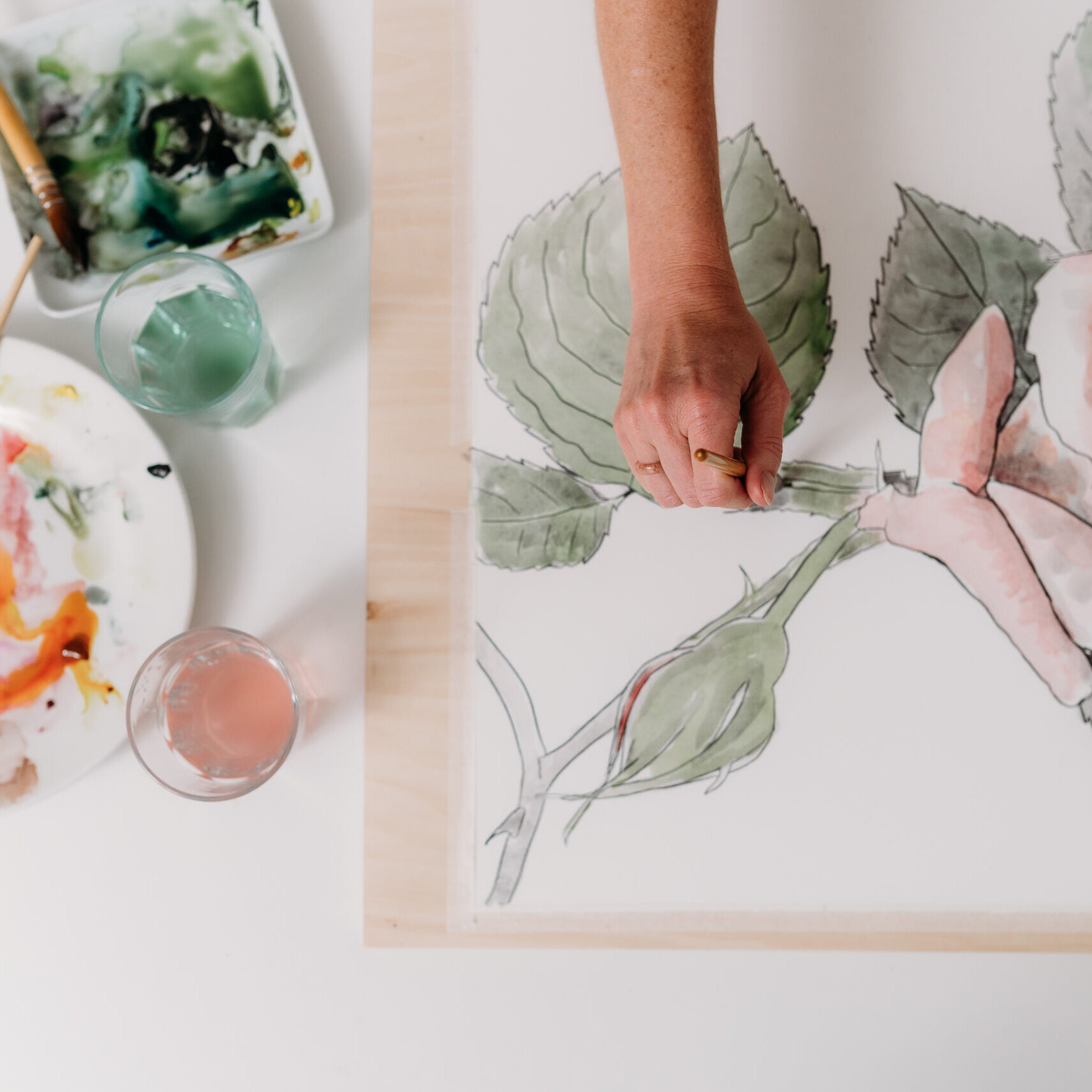
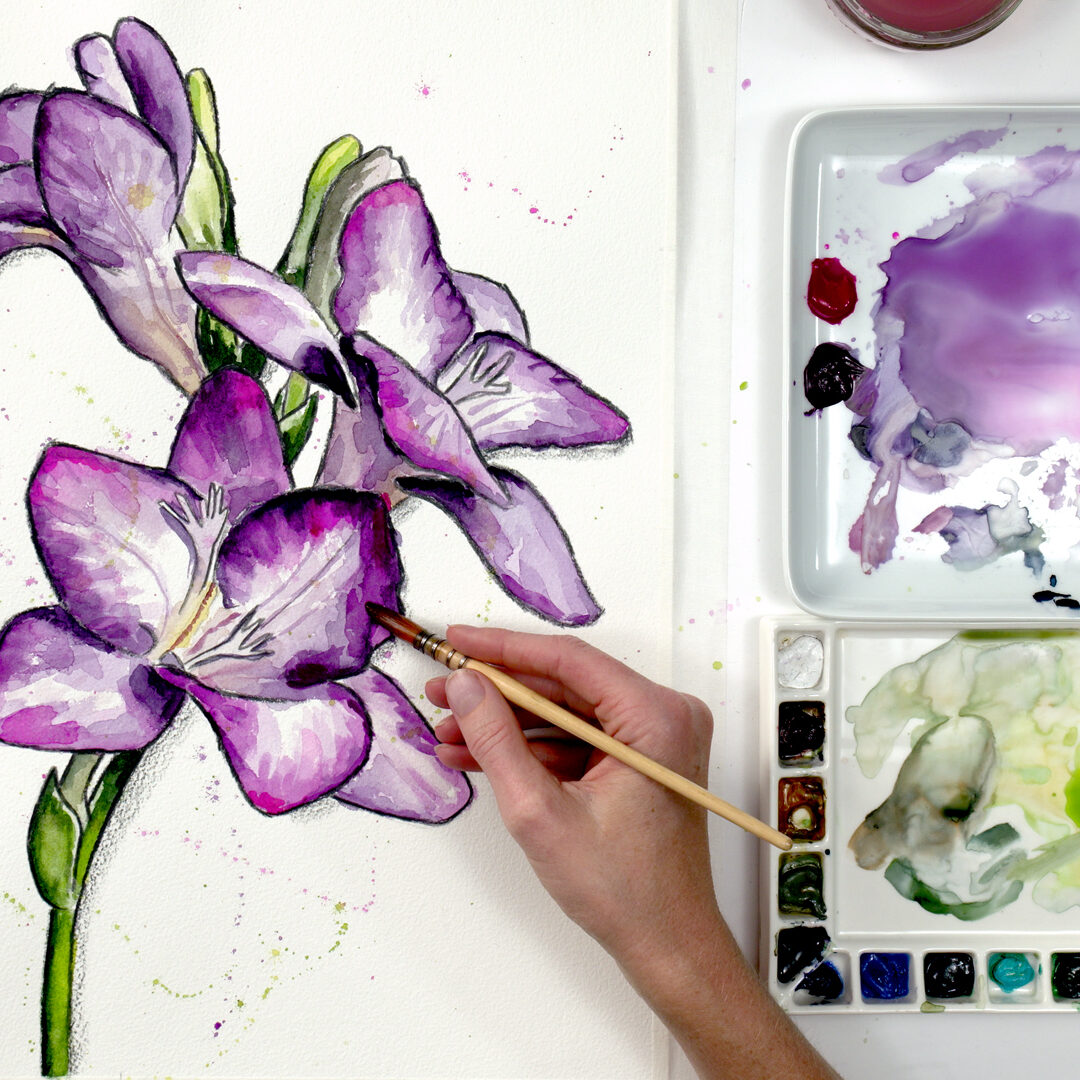
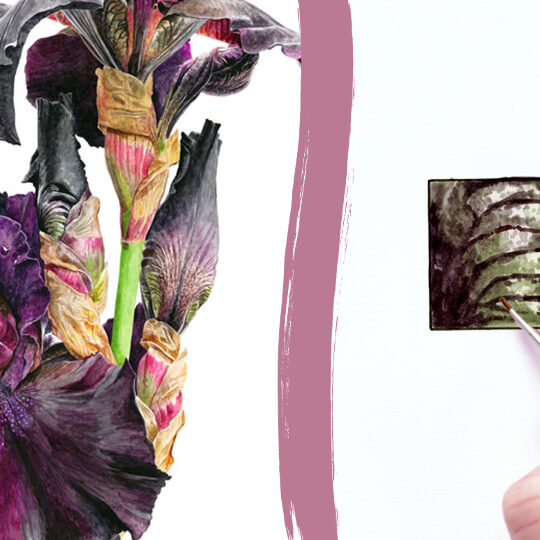
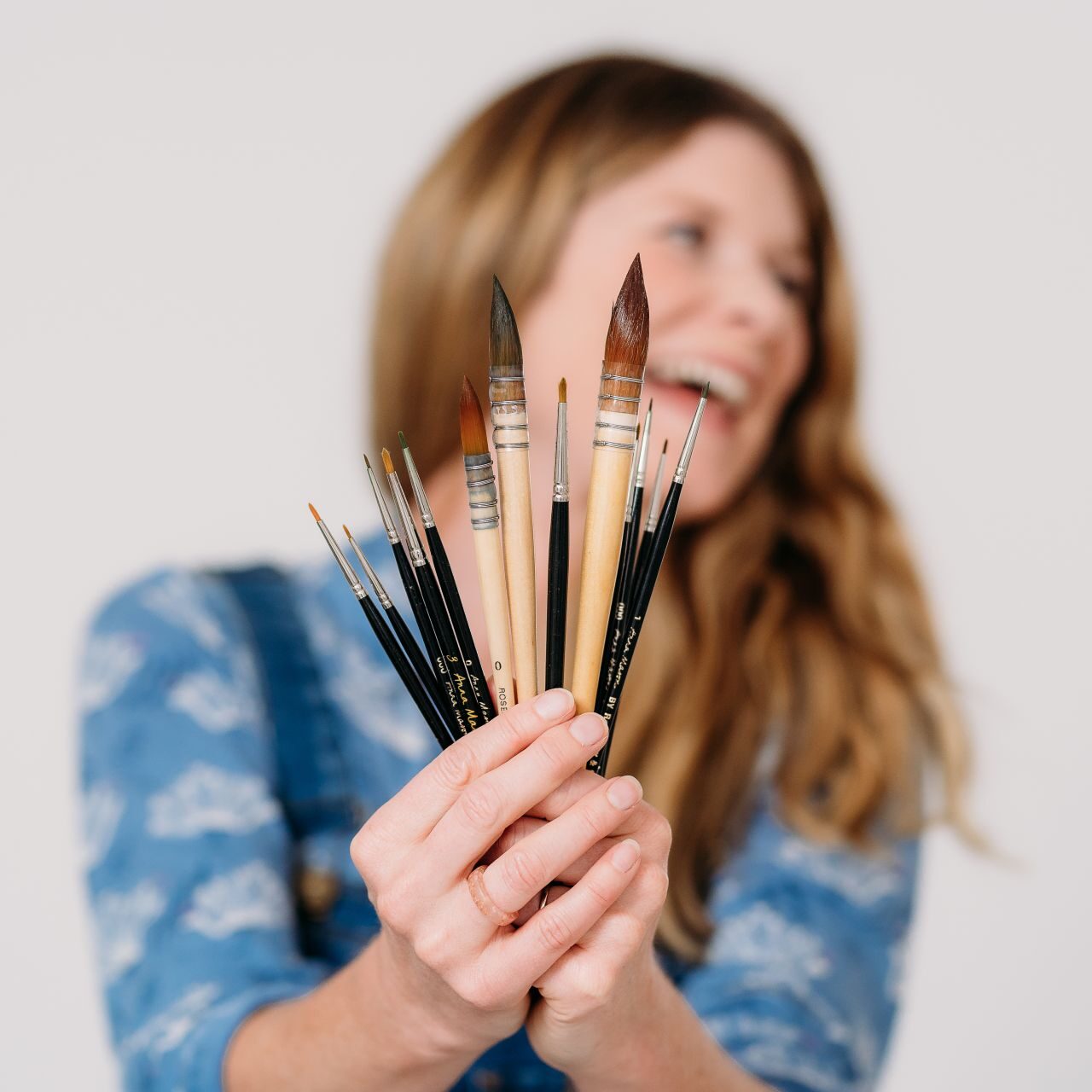
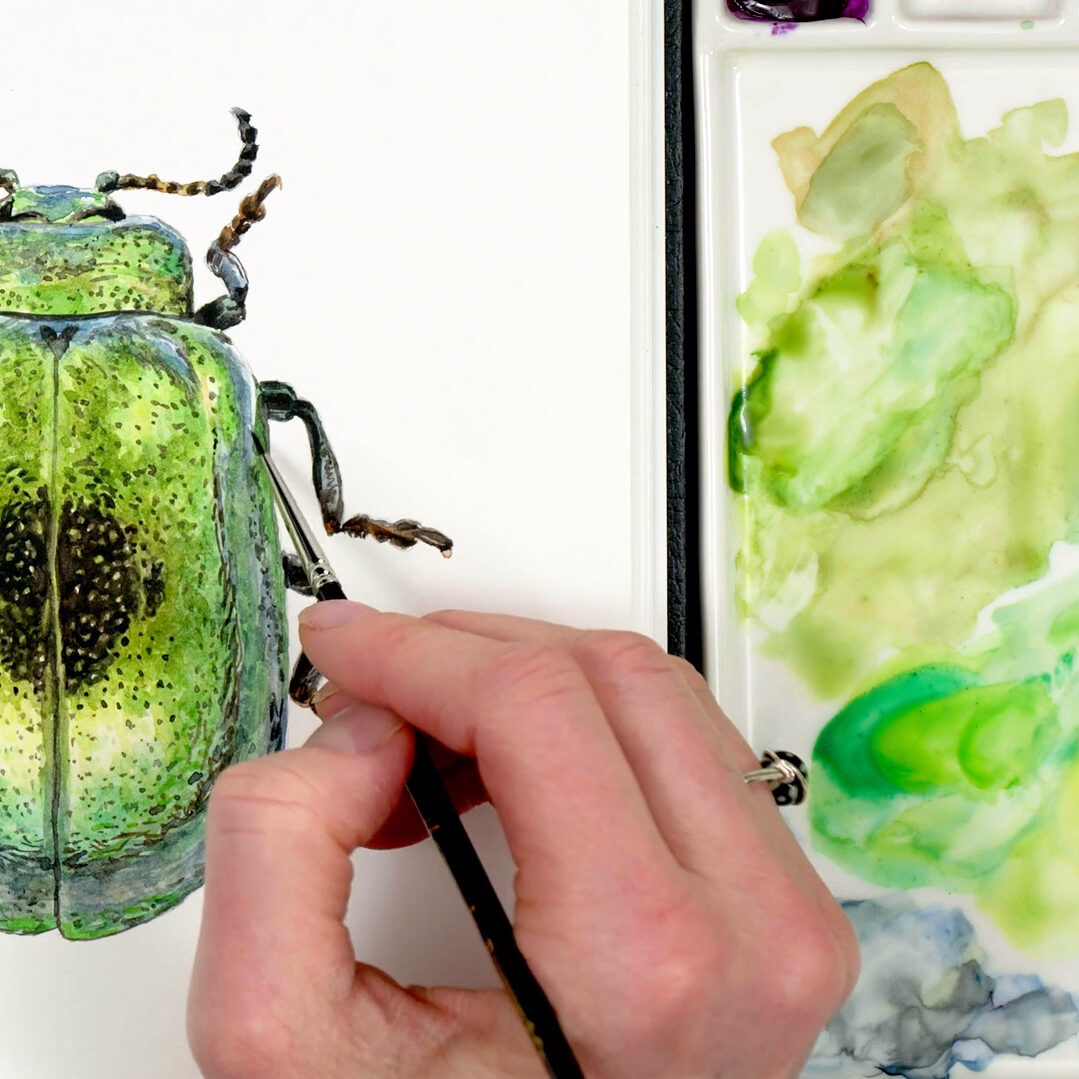
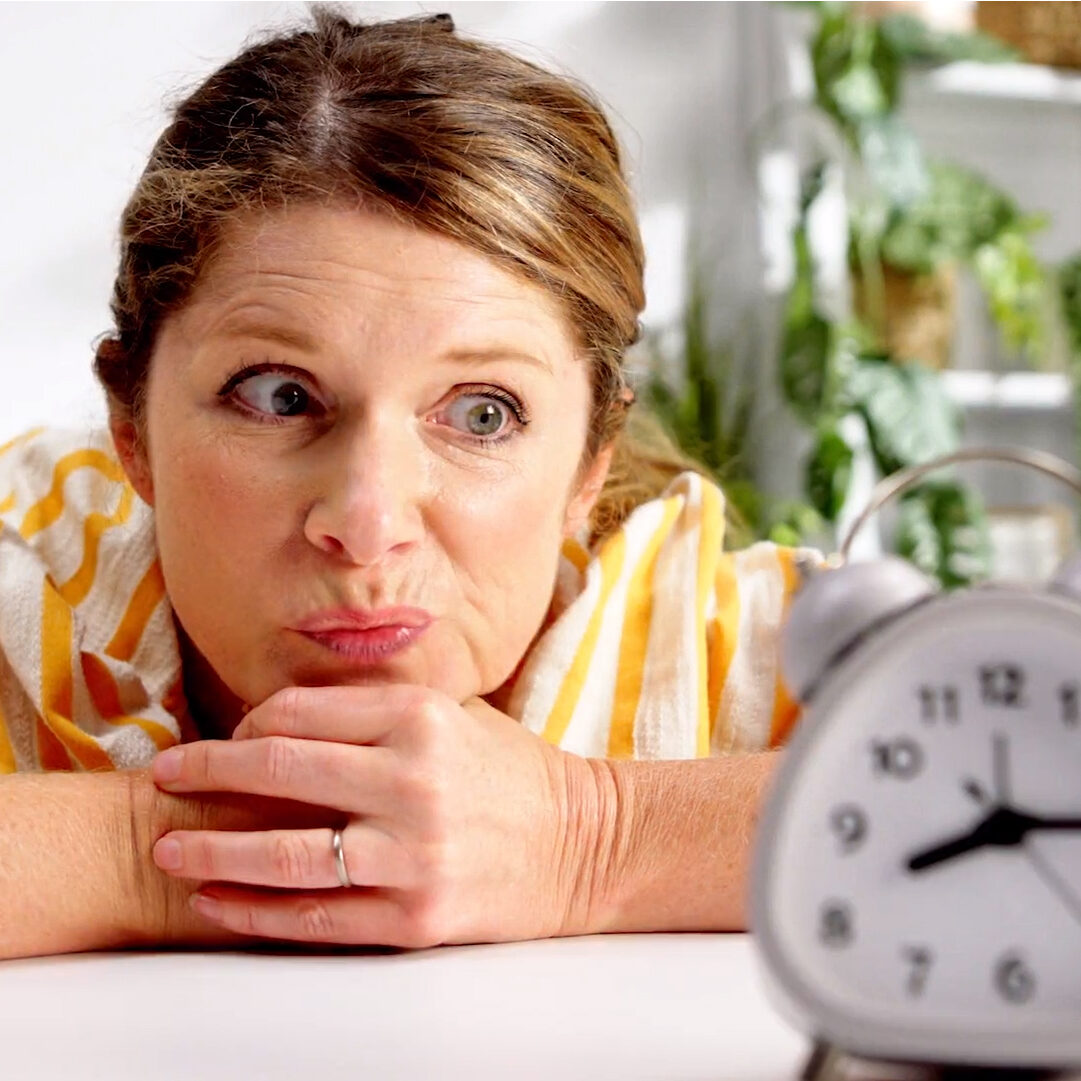
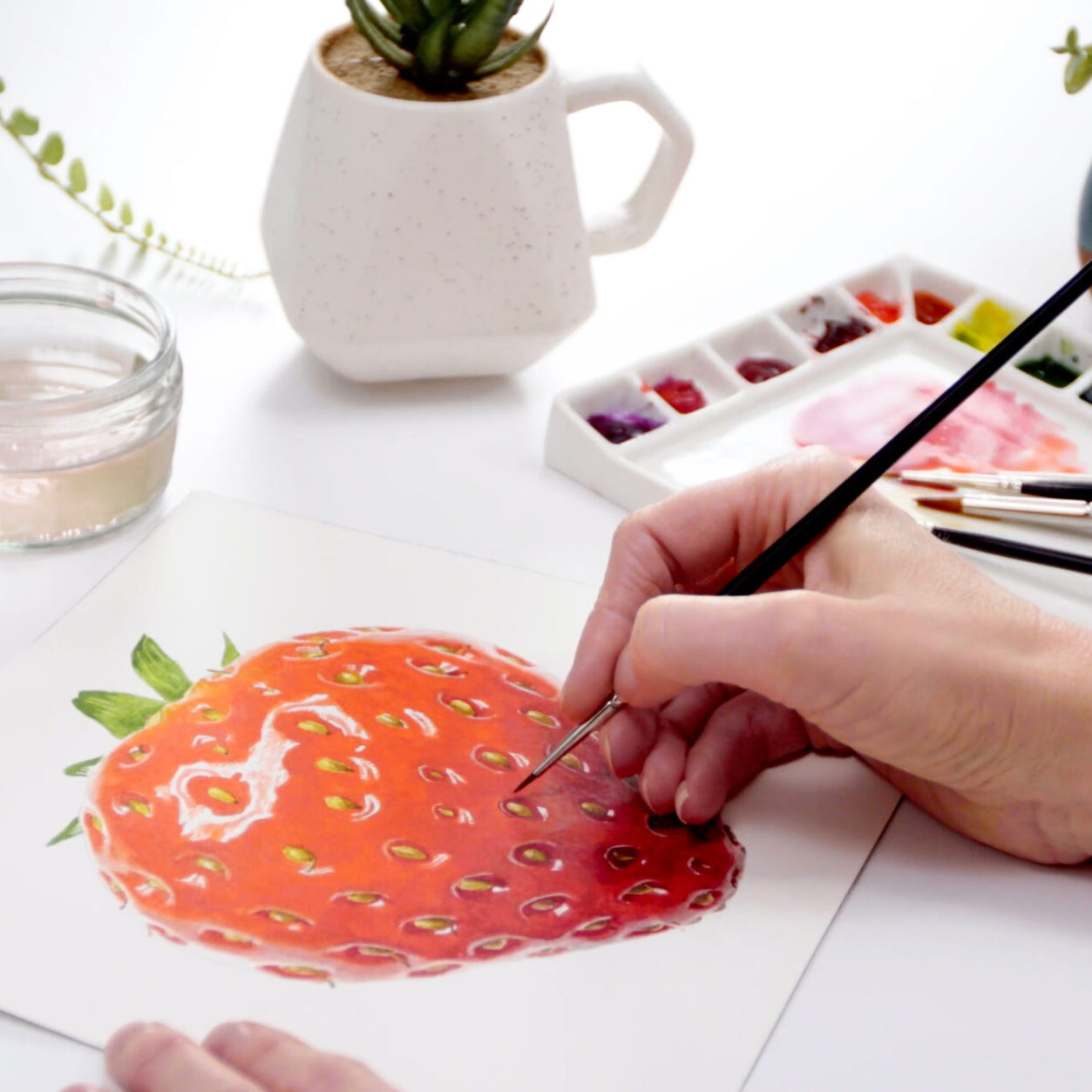
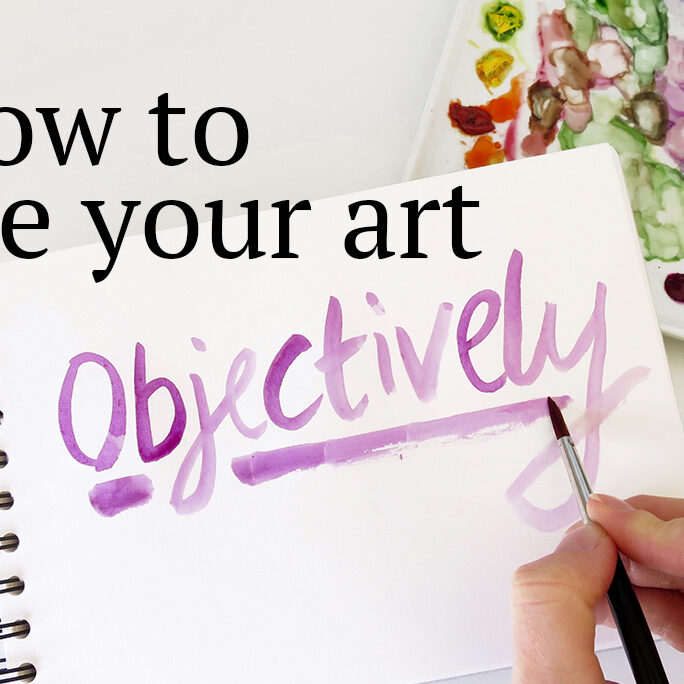

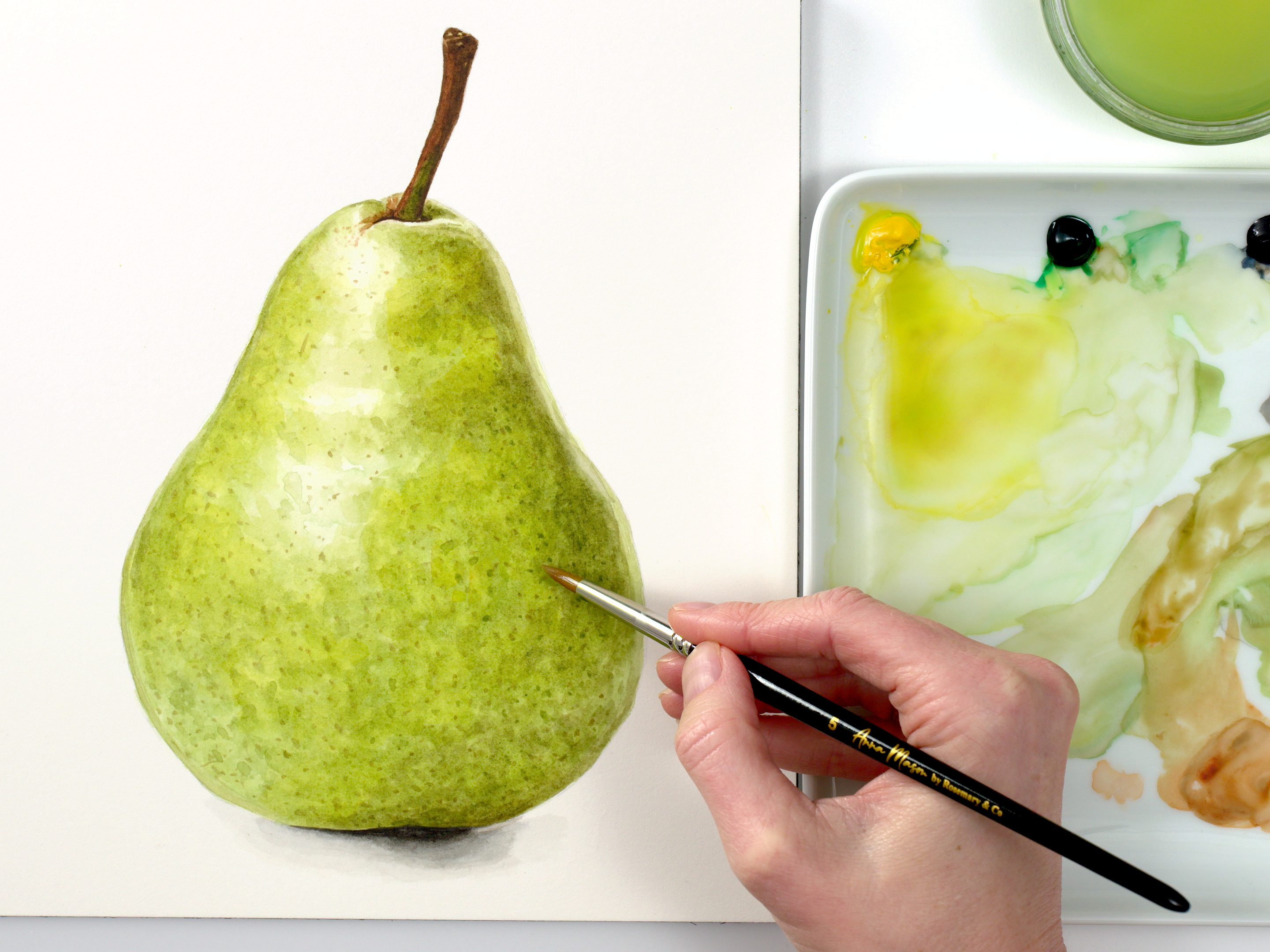

I realized that the negativity bias is inherent in our minds. Painting requires a constant critique of forms, colors, lines, etc which guides us through the creation process. There is ALWAYS some part of a painting that could be different.
It is knowing when to stop and accept it as our best.
We only have to learn not to focus too much on tbe negativity and risk not painting altogether.
Such good advice, Anna. Thank you.
If This sounds negative at first, bear with me.
It also helps to realise that nobody’s work is actually “Perfect”. When I started learning I had quite an uncritical approach to other people’s work. I was just overawed by their brilliance. perhaps this is the flip side of being negative about your own work?
I have a well thumbed copy of one of Shirley Sherwood’s beautiful collections of reproductions of botanical works in her own fabulous collection. I used to gaze at pictures by artists who were so much better than me and wonder if I would ever be that good.
I persevered. My work improved. I kept every picture I ever painted and all are dated. Objectively I can see improvement.
I began to notice that as my own work improved, I became more critical of others’ work, and I could spot (TINY) errors, even in the works by experts with years more experience than I have. I think that as you draw and paint, you learn to see better. Clearer, more detail etc.
I look at my work still sometimes and shudder. An admirer has totally failed to notice a smudge in the very centre!
When this happens, I just don’t draw their attention to my error. Perhaps they just love my work anyway.
What you’re noticing is that wonderful ability for your eyes/brain to actually perceive more detail once you have trained them! Love that our brains are so plastic and can develop. Thanks for your insightful comment Kate.
As long as we are not defeated by our own criticism I think it’s not a bad thing, every painting I do there are both good and not so good bits !
As long as I am progressing and getting better that’s okay.
My problem is getting defeated at times, especially around the “ugly duckling “ phase , so thanks for that reminder.
A lot of us nowadays are used to almost instant results and that’s just isn’t going to happen with watercolours, I have a love/ hate relationship with them, but I am going to win !
All the best Anna
I always take a picture of the work. It changes my perspective as I tend to be too close. I also look at it upside down, for the same reason.
I have learned to overcome the ‘but it looks like a patchwork’ stage using these methods – as well as the hold it up to the mirror option, if there is one.
If I think it cannot be redemed, I write what I have discovered and learnt all over it and in my planning book so that I can move forward from experience.
I can’t believe ANYONE would give you a 7/10 for your teaching!
Good article! As a retired engineer and engineering manager i learned to use the negativity bias constructively to improve my designs. On my paintings I can use it the same way. My problem comes when I can see what is wrong, but have no idea how to fix it!
By the way, I am serious with my comment on your teaching! I couldn’t control watercolor at all and then on the very first video of yours that I watched, I was able to do a very successful painting! Fantastic teaching and a fantastic method!
Thanks so much Mike! So pleased to have helped you with watercolours
I agree completely. Anna is a teacher extraordinaire!
This was such a great discussion. I know all of us saw ourselves in it, like you said we have all known this. It ties into something a friend sent me recently and I’ll share it with everyone. I love the community forum here, such insight can really be helpful in overcoming negativity bias
A trick I use is to take a photo of my work. For some reason it helps me look at the piece differently. Sometimes I put the photo up on my computer to really look at. Maybe it works as a way to distance yourself from it
Yes this works a treat, thanks for sharing Jan!
Thank you, Anna! I, too, have perfectionist tendencies and early on in your school I was really hard on myself. That kind of made it not fun at first. I was getting really frustrated. But positive comments from others is encouraging and I think after a while my brain just started seeing things differently. I have learned that walking away when I’m frustrated is really helpful. When I look at something with fresh eyes it’s amazing how differently things can look. And one thing that really helped me is a comment that I heard another artist make. That is, “Don’t be a slave to your reference photo.” And I was doing just that. I would get frustrated if my painting wasn’t EXACTLY like my reference photo. So I’ve tried to get away from doing that. With everything we learn from you we can improvise a little bit here and there and that even serves to make the painting more our own creation. Thank you again for your amazing school!
I have found if I’m struggling with a painting and don’t know what the problem is I take a picture of it with my iPad. I see it diffferently than looking at the real piece. It’s like it’s a different piece all together and I can see the areas that I need to fix. Kind of like leaving it till the next day to look at. This may not make sense to everyone but it works for me.
Hi Janice,
I absolutely agree about taking a photo of your art. Somehow it seems more 3 dimensional in a photo! You are seeing it from a different perspective – and it also helps point out the weaknesses in it. I always take a picture – sometimes many, before I am satisfied with it. Happy painting!
I will share with many I know right now, and retain to share with people I have yet to meet. We’ve all been there, and will go there repeatedly.
Thank you. You and your work have inspired me again and again.
Thanks for the advice Anna. I have been consistently beating down myself with my art. Even when I get good reviews I still feel that it is not good enough. I really myself that I am not where I want to be as yet.
However I learnt that what I consider good may not be what someone else may see. I sold a painting to someone last month. I was surprised when the ones that I had placed before her for sale she actually chose a totally different one. One that I had made up from my head thinking that no way was it good. It does take time to feel that I have accomplished a good painting. In time I will be less critic of me. Thanks
Anna,
I really enjoyed the advice . . . I needed that. I do try to find the positive in my work, sometimes it is not easy. I am now going to not criticize the work until it is almost complete. That way, if I have to make changes I will see where it needs to be made. I have to work on my darks.
Thanks again. I have learned so much from your teaching.
Useful advice Anna, and everyone else, thank you. I remember going to an exhibition in Paris of the work of Gustave Caillebotte (my favourite painter) in which were displayed a dozen or so of his attempts to paint a wet pavement. I had always assumed that he just, somehow, painted….. but no, he worked on different elements before combining them to paint the whole work. I think that maybe there is a lesson here for us all…..
Thanks Anna for this topic and your advice. I notice many time things I did not like at all that I did, when put away and brought out again I have a very different perspective and many times end up really liking it! I noticed this when all my art was suspended for a couple of years due to family difficulties we were dealing with. We moved and everything was boxed up. I also noticed some of the things I thought I liked I didn’t so much anymore. Go figure …..
Also, my Artist friend who left us this past year used to tell me that when we are critical of our work after someone has praised it -we are also telling them in a way they don’t know what they are talking about and they don’t have good taste. This helped me to keep my mouth shut and not point out the flaws.
Thanks again, for the reminder and fresh tips. 🙂
I really appreciate this article about negativity bias, Anna. It helps to understand why we pick on the little things we don’t like in our paintings even though overall they look beautiful. Thank you for all that you do and best wishes on getting more sleep as Baby Fern grows up. I hope more sleep is just around the corner for you. I know it makes such a difference.
I have doubts that one can objectively judge one’s own works. The emotional attachment is very high. That is also important, because we should never make final judgments, but always assess the current status. That is, with the current knowledge we may find our work wonderful and are completely surprised that we were even able to create something so grand. Fortunately, at the beginning we are almost blind to some mistakes, because we do not know them at all and that’s a good thing. All at once does not work. The term “progress” is therefore a wonderful word.
In a year it looks quite different, we have gained skills and routine, climbed to a much higher level and in retrospect, the work of critically considered 1 year ago is nowhere near as good. the offense is increasing and we are becoming increasingly self-critical.
An important aspect is the question “Who or what am I actually judging?”
Strictly speaking, it is in a school tutorial only my retouching of a genius work to which I (I am now fairness just synonymous me) even not in the least able to create it without Anna’s help. More than half the rent and 2/3 of the success belongs to Anna, she gives us wings, but without her we are again simple pedestrians for a long time.
So it is important for us to be able to transfer the knowledge we have learned and thus to imply in ourselves that we can reproduce it on our own. It takes time, during which time we create wonderful works, but we can also be proud, but we should be prepared for the day to come when we can not pick up the Anna wings at the cloakroom in the morning and maybe bring a backpack with us instead Have to carry stones 🙂
In the long run, our self-criticism should become realistic without taking the courage to develop our own creativity.
It is good and very important that we (and our environment) see our qualities a little more euphoric in the beginning, because that gives us the surplus of motivation and joy to continue, not to stop hurdles and to keep the courage we desperately need , Similarly, the praise of others is important, the good praise, the less good leave aside or without knowing words, …. in 1 year, this has improved by itself, even without pointing today with a finger on it. Of course, it can be helpful to supplement something in the know-how, but not to bother much with the inevitable mistakes that occur at the beginning.
However …. at some point can also stand still and then we need and we tolerate a little more criticism and suggestions for improvement. It’s tough. Depending on the stability of the person, a criticism can be fruitful or even devastating.
Sometimes this has nothing to do with painting or technical questions, but with the individual’s ability to criticize. But that’s the way it is and that is why it has become common practice in forums to say almost only good things. from a teacher one almost always accepts criticism, from colleagues this is much more difficult 🙂 But as the saying goes: “everyone is architect of his own fortune”, everyone can also determine their ability to criticize themselves, for themselves and from outside.
that’s from the point of view of painting technique issues, not from a personal point between persons.
This is very timely for me, as I am VERY hard on myself. I actually am very guilty about getting a compliment only to point out what went wrong with it! I am starting to understand that my work does not have to be the perfection that I envisioned, except as it relates to improvement along the way. In the meantime, if people love my work, then I need to graciously accept those compliments. Thanks so much, Anna.
Such timely advice. I just finished the best painting I have ever done, and at first could see nothing but flaws. It wasn’t until I shared it on a Facebook page specifically aimed at helping artists improve their skills at painting horses that I finally got a clue. When I asked the FB group for assistance to improve my painting, I had members asking ME for tips on how to achieve similar results, especially when I told them I had done it in watercolors. It was tremendously helpful in opening my eyes to what I had accomplished.
Thank you so much, Anna! I am not sure if anyone else mentioned this, but I try to remember to look at my paintings in a mirror. It is amazing what errors I have found in doing that. And… I always love seeing your work and reading your encouraging words. Many thanks! Lois
Very good discussion. It’s really hard to be objective about something that is inherently subjective. Being relatively new to this, I can well understand the ugly duckling stage (happens every time) and the feeling that if one part goes wrong then I may as well give up. The ‘rules’ I have given to myself are 1. Don’t bother to paint something that really doesn’t interest me. It may be technically challenging and a good way to practice a technique, but honestly if I am not emotionally involved in the subject then I am already losing the battle. I probably would never want to do commissions for this reason alone, even if I was good enough 2. Think of each painting as a series of challenges and not one big challenge, for example did I capture the highlights, have I got the shadow in the right place etc. For me, if something doesn’t go quite right in one part I can still move on to do the next challenge in the same painting. 3. Do the things that frighten me after I have had a good think about it but not leaving it as the last thing to tackle. That’s even more pressure to get it right.
Anna’s method has helped me enormously to realise I can build and layer the paint to get the desired effects, so I do feel I can try to make adjustments if something doesn’t look quite right.
Finally, for the subjective part I am already prepared. I know what I can do better next time and if someone points that out, well it’s not a shock. Usually I am pleased with the outcome (even with faults) because it’s a subject I really wanted to paint, and if someone else likes it too, that’s a bonus.
Anyway, this is my method of keeping negative thoughts in check and motivating me to go on to the next challenge.
Hi Anna.. first, Fern is beautiful, congratulations! So happy for you, now with two little ones! Been with you a long time, your sharing has been helpful and appreciated, both artistic and personal!
As for negativity, I’m 71, been at this a long time, and it’s still there!
I now take pictures on my cellphone, and play with the light and colour adjustments. I also put a work away for a few weeks, then look at it with new eyes!
One hurtful comment years ago, did a great deal of harm, but I’m getting over it! Now, I believe the praise, say thank you, and trust in my skills!
I now teach, and always, always, find something to praise in each work!
Your posts mean a lot to many of us here!
God bless.. happy Mommying!! ❤️
Hi Anna, your topic is very interesting. I agree with the ugly duckling phase and leaving work for a few days to judge it better. I can’t work so much on my paintings, I prefer to leave work as soon as I feel tired, otherwise I ruine it because I’m in a hurry (I apologize for my English). My friends appreciate my work, but they are also sincere and polite even in their critics. In a world where only the ‘likes’ count and also a contrary opinion is irritating, I prefer polite and constructive criticism and if this comes from an artist that I love, well I really take It as a gift. Then, we must always think that our style couldn’t be loved by everyone.
If I’m not happy with a painting, I look for the bits I like, the smaller the better, and cut those out to mount on cards, several of which I have sold at craft fairs! I am now going through old paintings I have previously stored and cutting out sections of sky, for instance, and then using rubber stamps on them in various shapes, ready for cards. This may not make me a better artist, by I find it very satisfying. I work mostly in watercolour on paper, which makes this process easier.
So interesting that this article came up today. My daughter and I were going through my paintings yesterday and I kept pointing out the areas I didn’t like until she commented on it. After that I began to point out things I liked! This article is very helpful in understanding that and I will use the information in the future to positively critique my paintings. Thank you!
Isn’t it funny how our brain works, it seems we really do dwell on the negative.I was allways doing this until I decided not to take things so seriously. Ok I have ripped paintings up half way through, now I push on telling myself it’s only a piece of paper.
Bottom line is I love to paint it gives me great pleasure when things go right it’s wonderful. But if we give up half way through how do we know what could have been I’m a learner with art so I have given myself permission to wreak a few paintings in the process of learning. Give yourself a break from the negative in all aspects of your life , just enjoy the ride.
Anna, thank you for sharing your knowledge and thoughts about this subject. So many factors can influence how you deal with the things you do for work or as a hobby. I have been very demanding with myself all my professional life (being a MD there is no room for mistakes) that it’s almost impossible not to keep being the same way with my painting, my piano playing. As many have said above, critics are expected when you show your work, and one must learn to live with them, even when not liking or agreeing. But managing our negativity bias is another thing and not a simple one. Like others here I learned that a photo enhances the 3D perspective and this is something that makes me feel I’m on the right direction or that I have done a good job. Another thing I do when painting botanical subjects, I submit a photo of my painting to a flower identifying app. (To tell the truth, to more than one.). If it recognises my painting as the subject I was trying to paint, well, it’s a sign that I did a good job. If not, I probably did something wrong and there’s room for improvement. I think I have found a way to have a cybernetic, totally impersonal critic using an app. It is not afraid of hurting my feelings and it’s impossible to be mad at it for doing its job. Than I go after the criticism with emotion that only people can give. And they complement each other. Many times I remain thinking that I could have done better, but then I think “hey, you started painting just another day and want perfection? Stop that and enjoy what you’ve already achieved!” Thank you all for the wonderful input.
I am very impressed with all the comments made re negativity. the one thing I grapple with is the comment of our painting not looking exactly the same as the reference photo. i am obviously too hard on myself in this regard. i will attempt to not get hung up over this. just relax into the journey. am unable to paint for awhile as i have just had a second surgery on my painting hand. i will still enjoy anna”s weekly tutorials though.
Great tips here! I also take a photograph of my paintings to get a different perspective, as suggested by several.
Philosophically speaking, I think all artists tend to be hard on themselves – it’s the nature of art to strive after creating something with our hands that matches the vision of our eyes and minds. Our eyes process vision almost immediately, our imaginations work even as we sleep… how do we dare expect our hands to keep up? Expecting our hands to produce what our minds see is a tall order and Anna’s admonition to be gentle with ourselves is extremely relevant, as we patiently teach our hands to keep up with our minds’ eye.
One thing that helps me is to think of each painting as if it is a journey to a destination. When travelling in real life we don’t always get what we planned for upon reaching our destination. However, if we take time to enjoy the planning, the packing, the travel, then the journey becomes just as important as where we end up. Enjoying the process of painting is as important, if not more, than enjoying the finished product.
Practically speaking? If all else fails I recommend putting the darn painting away for a few days… weeks…. months even. I’ve put away a painting that I’ve hated and then come across it months later and been startled at how much I liked it! If you stop looking at it – you’ll forget where the “mistakes” are!!
What a timely discussion! And so very true. I think every artist, at every level, is always his or her own harshest critic. I know I am guilty of that – just focusing on all the flaws. The last few years I’ve been seriously trying to lighten up on myself. Now when someone complements something I’ve done I thank them and say something like: “I had a lot of fun doing it,” or “I really learned a lot working on it.” I try not to point out what I think is wrong with it. And thanks to Anna, I’m not upset when my tutorials don’t look exactly like the reference pictures.
Since I had just posted a painting I’d done awhile back and was aware of it’s strengths & weak points, when I received this article this morning I was at first taken back and felt I had been singled out for a scolding. However, after re-reading the article & looking at others comments, I could see the value in what was shared. Learning to paint is definitely a journey!
This is a great article to ponder! Thank you, Anna, for bringing it up!
I use these ideas to combat my perfectionism……… 1). I approach every painting as a vehicle of education. What can I learn or practice with this painting? How can I incorporate something I am not confident with in this painting giving my self a chance to practice it? 2) when I get too frustrated or stalled, I put the painting in my Time Out Box. It stays there until I re-examine it a couple of days, weeks, months or even years later. When I am not into painting a current project I go through the Box and harvest projects to finish and often wonder, “now why was I mad at this one?” And lastly, 3). I remind myself that “it’s just a piece of paper.” I make it art.
Funny to hear the ugly duckling stage. I think sometimes we get stuck there and don’t know how to get past it. I am unhappy with almost every painting for the first half of it. It takes that long to get the under painting done and enough detail to get it to start coming together. I’ve also discovered over the years that sometimes a painting just isn’t finished and that little bit of extra work will really bring it around. I don’t know very many serious painters who aren’t hard of themselves. I think it’s just the nature of being an artist and figuring out how to work through it. Nothing is ever perfect.
I’m finding that painting is a journey and that I can’t expect to be there (or an expert) when I’ve only just set out. Several people have suggested that we be gentle with ourselves and I most heartily agree. We don’t expect a child to do advanced academic work in elementary school but we know that eventually, it will happen. As we practice the techniques that Anna demonstrates, we can’t help but improve over time. That’s a given! But we do need to practice and put in the time. Hopefully, our critical side will become quieter as we show ourselves that we can master that weaker area. I try to thank the critical side of my brain for pointing out just where I need to improve; then I notice that the critiquing becomes less noticeable, as I think of ways to improve and begin working in that direction..
Guilty as charged. I am working on this self issue as a watercolor beginner enthusiast. First step was to go out on a limb and show others what I have painted. Fortunately, the kind people on this forum have given me the courage to do that. It is also nice to hear that everything is not figured out and successful on the first go round. We have many artists to thank for sharing their duds after also sharing their beauties. That has helped tremendously to know that most experience those moments. Great idea to take a photo. I will incorporate that in the future if I ever find the time to do the next tutorial. Thanks for the insight and creating the discussion Anna!
Guilty!
Thank you for sharing this interesting thought provoking discussion Anna!
It’s thanks to Anna’s encouragement throughout every tutorial, that has helped to build my confidence. & all the wonderful support from the school community has been a great help. Also, encouragement from our local art group, family & friends.
I must say, that since joining Anna’s school, & the feed back from my paintings, has made me realise that maybe I had been too hard on myself . So as my work progressed, so did the process of not being so critical. Taking photos at various stages also helped. One of my art tutors always reminded us to: ‘Remember, that at the end of the day, it’s only a piece of paper!’
With thanks to you all….
Great advice—- If I am not happy with a painting I just leave it alone for awhile –I leave it where I can see it. After a few weeks I often pick it up again with new enthusiasm and see if I can push it a little further. Even an unfinished painting has provided some new lessons!
Love all the positive commentary here! One trick I have found if I start to get really worried and discouraged at the ugly ducking stage is to start to develop an area of the painting several stages forward so that it is ahead of everything else. Seeing something positively progress gives me confidence!!
Hi Anna,
I love this take on things, not just art.
I have always called the ‘ugly duckling’ stage.. the ‘Ugly teenage years’ and taken that some people seem to be in that stage longer than others, just as some paintings are in that stage longer too. I found that by taking pictures on my phone at the many stages of a project helped me enormously when working on new pieces. By looking back at those earlier ‘Ugly teenage years’ has always made it easier to push through current projects! I’m definitely learning with each piece…. thankyou for you for encouraging al of us..
Why are we so HARD on ourselves!!
Letting go of the inner critic is one of the HARDEST things for us as human beings to do. After leaving my first painting class in tears, and chastising myself for even trying to learn to paint ( or draw),somehow I persevered determined not to be defeated.
Little by little, I let go of that ” critical “voice and found myself LIBERATED and free! I can now accept myself and enjoy the journey of my artistic endeavors completely, knowing its not going to be perfect, and that’s OK!
I absolutely agree polga!
I love that painting says that it’s ok to be us.
We’re enough, and we’re not too much… all those things that (women especially) have been told by the world.
We’re ok, and we need to be kind to ourselves, even if others aren’t. We’re not a mistake, we’re exactly what we’re supposed to be, learning on a journey in every aspect.
Perfection is overrated and paralysing!
Thanks a lot for your tips! It is always nice when I find one of your mails in my mail box! I am quite happy with my work, in general terms, but it is true that, when I push myself to try new things, I tend to be too critical with my results. I forget too often to be gentle to myself. When that happens i alwauys say to myself: “would you ever be so hard with a friend who shows you his or her work? Of course, the answer is always : ” No way!”. That make me conscious that I must reconsider my attitude.
I’m just now getting to this. you wrote this on my birthday 😀 Anyway, I hope you and your family are well and happy. This was amazingly helpful!! I am starting to meet with a couple of friends to watercolor paint once a week, I will have to share this with them! Thank you so much.
Great advice, Anna!
When I stop and look at my painting from where I’ve come from, rather than where I want to be, it’s easier to see the positives.
Give yourself permission to be a little less humble for a moment and admire the areas that have improved, while acknowledging there will always be scope for growth.
After a day or two, I can step back and objectively look at one or two things I have learned and can build on.
For the cost of a piece of paper, so have another go and keep moving forward. There are plenty of subjects with similar aspects if you’re simply over the one you’ve completed.
Enjoy the moment!